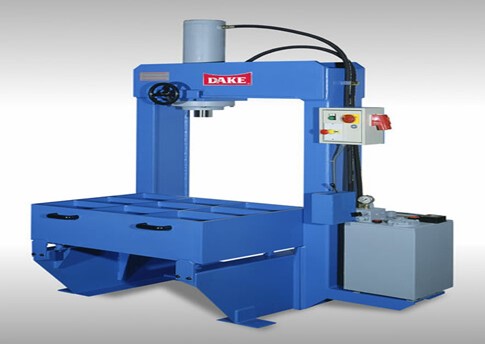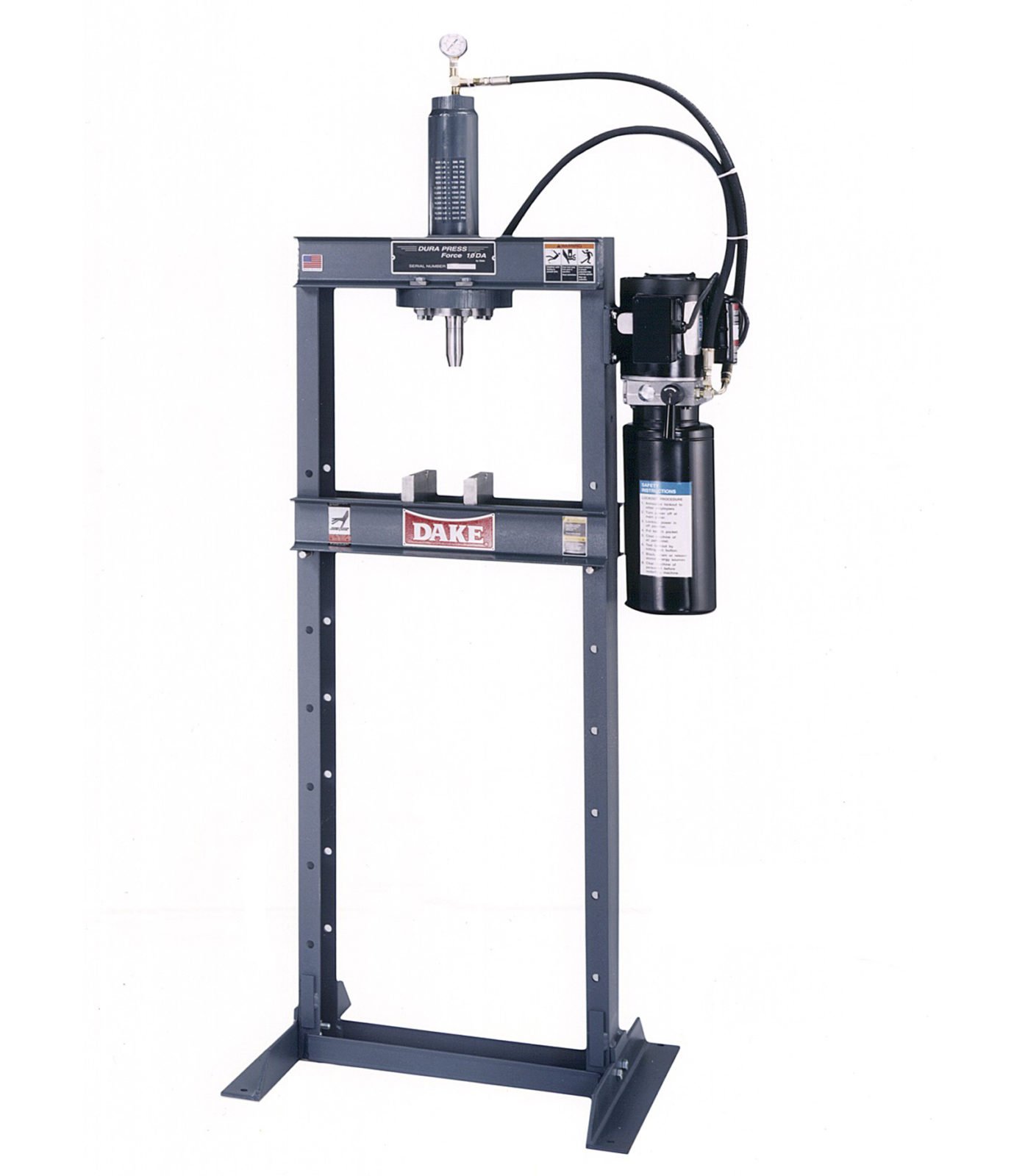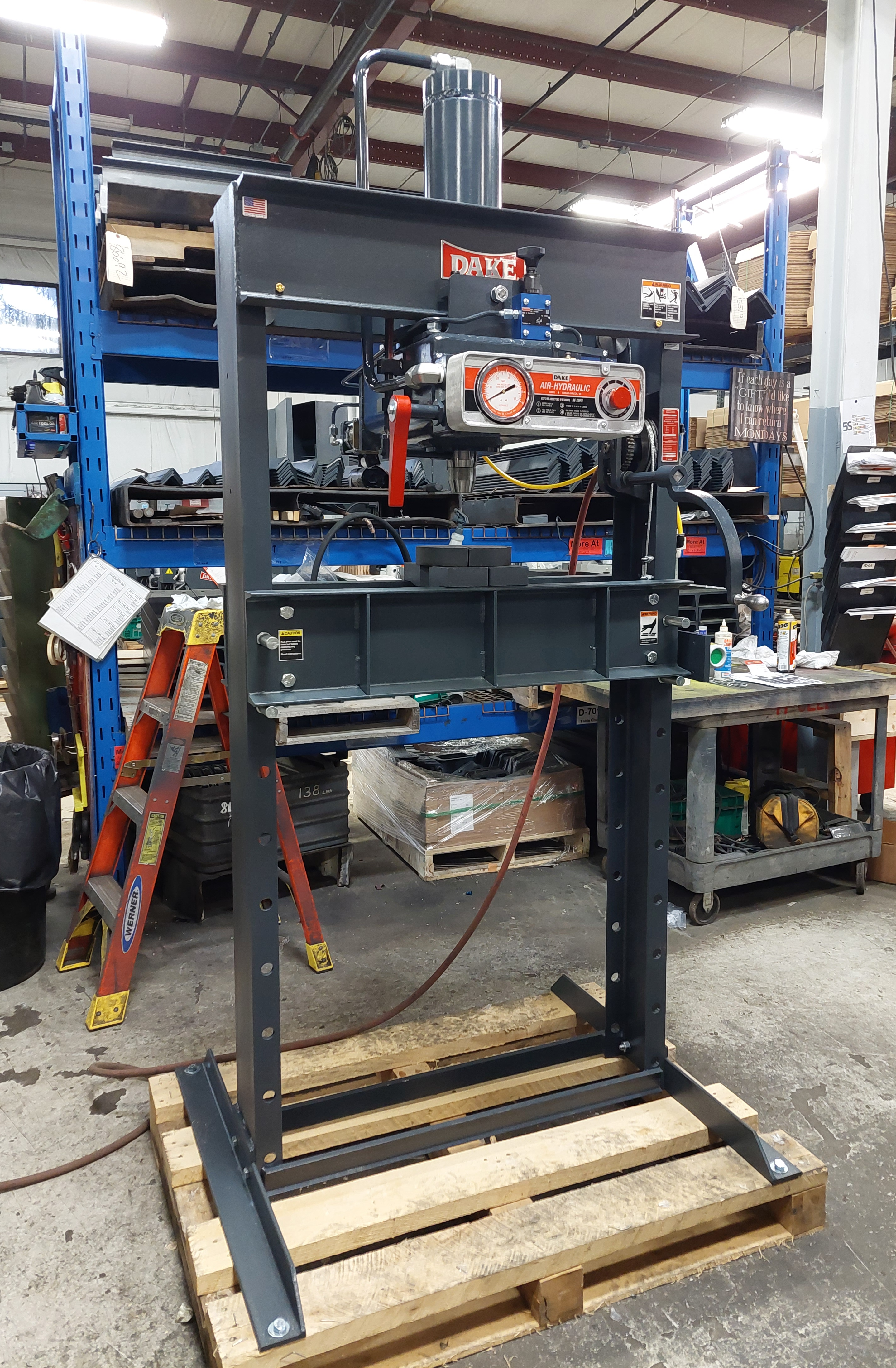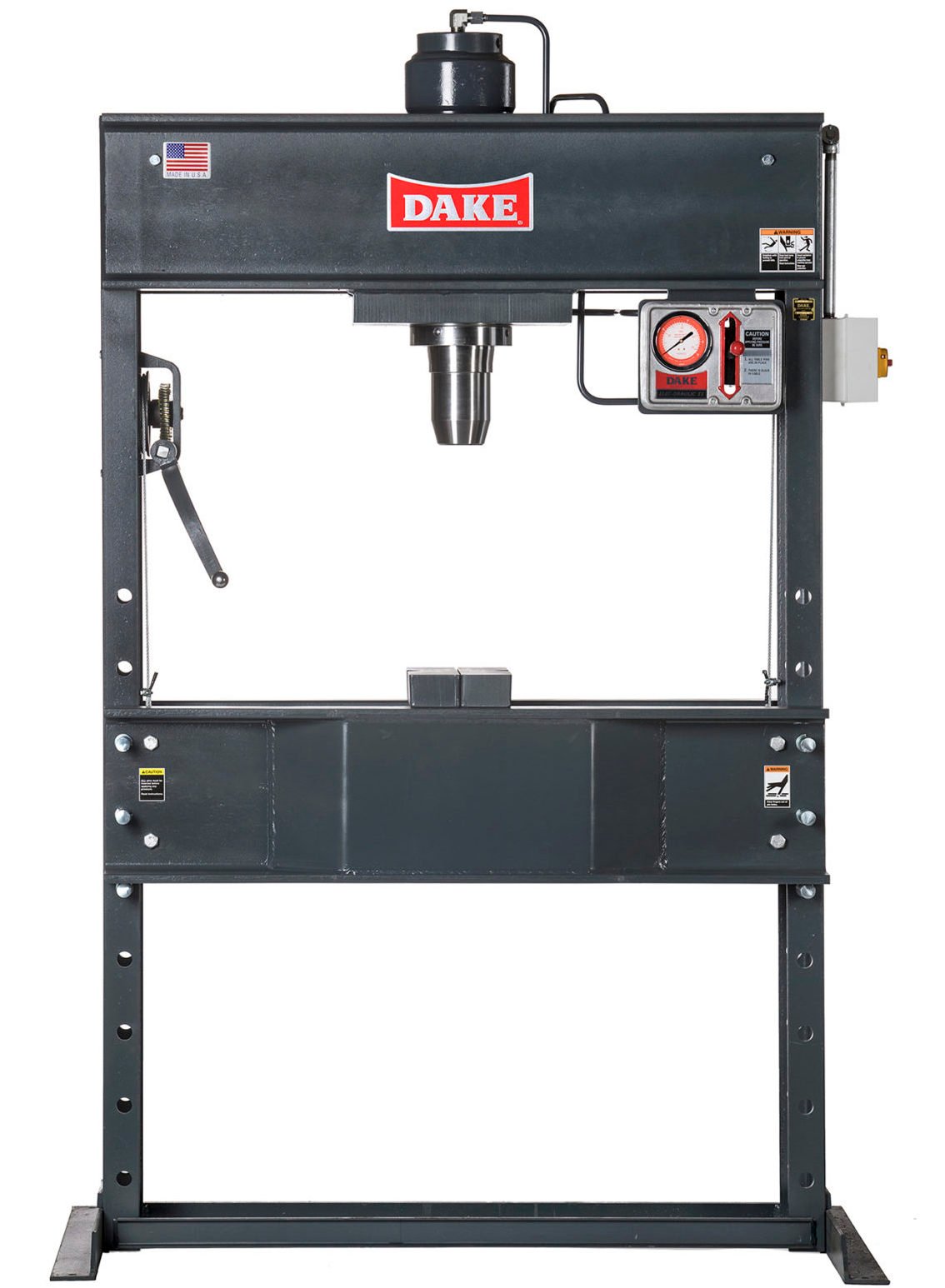Hydraulic presses are almost as old as our country. To be exact, they were invented in 1795 by the same man, Joseph Bramah, who created the flush toilet. Bramah had studied and applied the principles of Pascal’s Law (below) to his invention:
When pressure changes anywhere in a confined space of fluid that cannot be compressed, that same pressure change will be transmitted throughout the entire space.
These systems typically consist of two cylinders--ram and plunger--connected and filled with fluid. Applying a minimum amount of force onto the plunger causes the cylinder to push the fluid below it. The pressure is distributed evenly throughout the liquid, raising the ram. The pressure between the plunger and the ram will crush almost anything that’s between them.
Hydraulic presses offer several advantages to manufacturers. Here are just a few:
- Full power stroke: Unlike mechanical presses, the full power of a hydraulic press can be delivered at any point in the stroke
- Built-in overload protection - A 50-ton hydraulic press will exert no more than 50 tons of pressure
- Lifting and pressing: Double-acting cylinders allow for both pressing and lifting
- Versatility: Hydraulic presses come in many designs and can be adapted to a manufacturer’s application
- Efficient operation: Because hydraulic presses have a relatively simple design, breakdowns, if they occur, are usually minor
Here is a list of four types of hydraulic presses and how they might help you in your operation:
1. The Movable Table Hydraulic Press
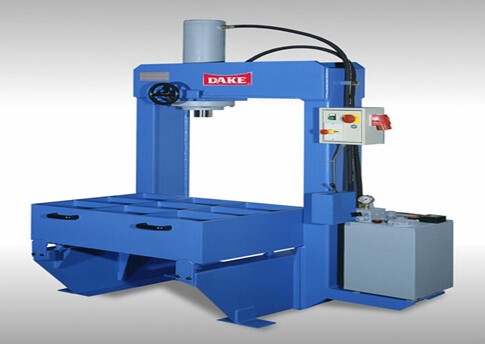
Dake Movable Table Hydraulic Press (Photo Credit: Penn Tool Co.)
Fabricators have a special appreciation for the movable table hydraulic press. That’s because this type of press allows them to load large and heavy pieces of steel from a forklift or overhead crane. And since these metalworkers are often straightening and forming sizable sheets, the movable table is ideal for them.
With a movable table hydraulic press, an operator can slide the ram head side-to-side and move the table forward and backward, allowing for access to various press points along the surface of the workpiece. An adjustable work-head offers maximum daylight for over-sized (higher) work, such as weldments, fabrications, and assemblies.
Most high-quality movable-table presses have the following advantages and features:
- Ideal for assembly, extraction, and straightening hard-to-load weldments, fabrications, plates, and bars.
- A movable table allows for the loading of heavy workpieces using a forklift or crane.
- Heavy-duty hoist quickly raises and lowers the work-head, providing extra room for oversized work
- Quiet hydraulic components for long life, greater efficiency, and a smooth pressing operation
- Toggle clamps that lock the table securely
2. Air Operated Hydraulic Press
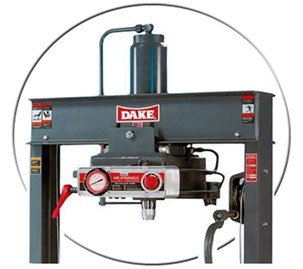
Dake’s Air Operated Hydraulic Press Work-Head (Photo Credit: Penn Tool Co.)
Sometimes called an “air-over” hydraulic press, the air operated hydraulic press can be a cost-effective and energy-efficient alternative to the full hydraulic press. These presses typically have fewer moving parts, resulting in less maintenance and downtime—and less noise.
Here’s how they work:
A valve is energized, and air pressure pushes down on the hydraulic fluid. Since the fluid cannot be compressed, the pressure energy is transferred to the hydraulic fluid, extending the cylinder rod downward. This all happens without a hydraulic pump and any other mechanisms needed to pressurize hydraulic fluid.
The hydraulic pressure is maintained throughout the stroke, and when the valve is de-energized, the ram retracts to its home position. This is a straightforward and cost-effective way of producing a hydraulic system.
The benefits of the air-operated system include:
- Cost-effective
- Energy-efficient
- Quieter
- Less heat
- Full-length power stroke
3. Double Acting Hydraulic Press
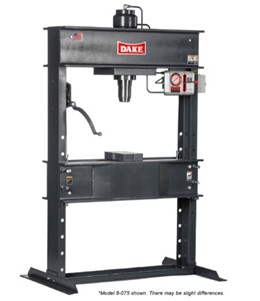
Elec-Draulic II Double-Acting Hydraulic Press from Dake Corp.
These hydraulic presses contain a double-acting cylinder that permits pulling as well as pressing ram action. Manufacturing companies often purchase a double-acting press for dies or fixtures that are too heavy for a single-acting press. And double-acting presses provide considerably more lifting power for a consistent return.
Double acting hydraulic presses have two “sliders”—one for pressing and one for drawing. The two types of slider arrangements include an inner and outer slider type and an upper and lower slider type.
Double-acting hydraulic presses are notable for their simple structure, low manufacturing cost, convenient adjustments, uniform speed and pressure, and minimal vibration and noise during operation. They are especially suitable for parts with small batch sizes, complex shapes, and deep drawing depth.
Look for these features on a double-acting hydraulic press:
- A smooth, consistent pressing action
- Variable ram speed for precise control of ram movements
- Convenient control of the press when the work-head is out of the operator’s reach
- Adjustable table for convenient vertical movement using a self-locking hoist
- Double-acting cylinder for pulling and pressing ram action
- Safety valve to protect against overloads
- T-ring seals that prevent pressure loss
4. The Manual Hydraulic Press
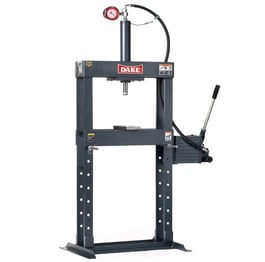
Dake’s Manual Force 10M Press from Dake Corp.
Manual hydraulic presses also use a hydraulic cylinder, often positioned vertically, containing a piston on which a hydraulic pump exerts pressure. As the piston advances from the pressure, it creates a compressible force on a stationary baseplate. Manual hydraulic presses are prevalent in metal forming, assembly, fixturing, and a host of other applications.
- Efficient hand pump that is conveniently located
- Rapid ram return that starts as soon as release valve is opened
- Heavy steel frame for greater rigidity
- Adjustable table and self-locking hoist for easy vertical movement
Look into our lineup of hydraulic presses
Our heavy-duty hydraulic presses are ideal for manufacturers and fabricators that perform straightening, bending, forming, testing, quality control, maintenance, punching, assembly, and shearing work. Dake has been manufacturing H-frame hydraulic presses since the 1940s. You can trust their quality!
To find out more, fill out our contact form, call us at 1-800-937-3253, or email us.
-1.jpg?width=1200&height=525&name=DAKE003_%20Logos_Red%20(002)-1.jpg)
